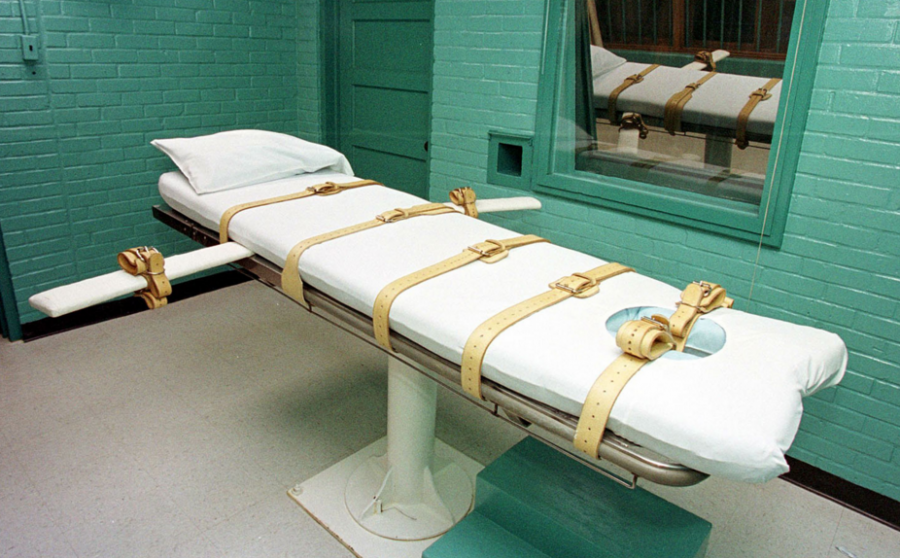After the attempted and failed execution of Alabama inmate Doyle Lee Hamm, Hamm’s lawyer, Bernard Harcourt, described the scene of the attempted execution, that was eventually halted at 11:30 because prison officials couldn’t find a suitable vein to insert the lethal injection into, as “botched, bloody, torture.” Execution team members stuck Hamm about a dozen times and may have punctured his bladder before giving up.
Court filings from July show that Harcourt had tried to get Hamm’s execution halted, arguing that lethal injection would be difficult and painful given Hamm’s severely compromised veins due to lymphoma, hepatitis, and prior drug use. However, even the U.S. Supreme Court allowed the execution to proceed just a few hours prior to the start time. Harcourt says that the team may have punctured Hamm’s bladder and femoral artery, because he was “urinating blood for the next day.”
As much as I would like to say the opposite, Hamm’s case is all too common; lawyers pleading and petitioning courts, followed by an attempted execution that goes terribly wrong, followed by outrage from the public. Botched executions happen a lot more often than you think or hear about. This is in large part due to the lack of a drug combination that is both lethal but not painful (even though that isn’t possible). It is also due to the ineptness of prison officials to properly administer the right type of drugs as well as the proper amount needed for the execution.
Hamm’s botched execution, while certainly not the only one in recent years, is perhaps the most high-profile botched execution since April 2014, when the state of Oklahoma botched the execution of Clayton Lockett, a convicted murderer. In Lockett’s case, he was given a combination of drugs that was never used before on humans. After receiving the drugs, Lockett began groaning and convulsing, and eventually died of a heart attack while lying on that table. Lockett’s death sparked public outrage, just as Hamm’s botched execution is sparking outrage today.
The cases of Lockett and Hamm and so many others are all too common in the United States, as drug companies have not been able to develop the right combination of drugs suitable for execution. Since lethal injection was first used in the U.S. in 1982, advocates of it argue that lethal injection would be a new and less painful method of execution compared to electrocution, which at the time was the primary method of execution.
Lethal injection, however, has created more problems than it has solved, and it’s time to get rid of lethal injection and execution altogether in the United States. While executing a criminal may be an appropriate punishment for their crimes, executing a person is cruel, inhumane, and morally reprehensible, and it’s time for the U.S. to realize this and end this violent and barbaric practice.
Despite the Eighth Amendment to the Constitution, which prohibits “cruel and unusual punishments,” the death penalty is federally legal in the U.S. as well as in 31 states. Prior to 1972, the death penalty question remained largely up in the air until the Supreme Court case Furman v. Georgia, in which the court struck down all forms of the death penalty. Unfortunately, four years later the court reversed itself in the case Gregg v. Georgia, in which the court broke their own precedent by allowing the death penalty to once again take place in the U.S.
Merriam-Webster Dictionary defines cruel as “disposed to inflict pain or suffering, devoid of humane feelings.” It is fair to say that death of any kind is cruel, whether it is a heart attack or murder or cancer. However, the manner in which the death penalty takes place in the U.S. is exactly that: cruel. Whether it be done by strapping someone to a chair and sending volts of electricity through their body or injecting them with a combination of lethal drugs, the death penalty by its very nature is cruel, unusual, and inhumane.
Whether it is an act of Congress or another landmark Supreme Court decision, it is time for the U.S. to get its head on straight when it comes to the death penalty. For us to truly be the city on a hill that so many people claim, we need to lead by example, and that starts with our morals, values, and upholding our own constitution. But as long as we execute our own citizens, even if they are criminals, we will have a hard time leading the world when it comes to other humanitarian and civil rights issues in the future.

































